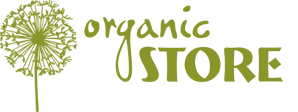 Among all kinds of at-home hair removal, waxing is considered the most efficient one because it helps to keep the skin hairless and smooth for a period of a couple of weeks to two months. However, it’s important that you follow some simple rules to avoid possible bruising, burns and ingrown hairs. Here’s a brief guide to at-home waxing.
Among all kinds of at-home hair removal, waxing is considered the most efficient one because it helps to keep the skin hairless and smooth for a period of a couple of weeks to two months. However, it’s important that you follow some simple rules to avoid possible bruising, burns and ingrown hairs. Here’s a brief guide to at-home waxing.
The principle of hair removal using wax is fairly simple. When wax is spread over the skin, it adheres to the hair growing there. The wax is then quickly ripped against the direction of hair grow. This removes the wax along with the hair. Contrary to popular belief, waxing doesn’t affect the hair follicles and can’t stop the growth of unwanted body hair permanently, but regular waxing helps to make the hair thinner and lighter, making it less visible.
Waxing has many benefits versus other forms of hair removal. It allows to remove large amounts of hair at one time and the result lasts long. At-home waxing helps to save quite a lot of money on salon treatments. But if you don’t do it properly, you might experience bruising, burns, and ingrown hairs. So you need to choose the right type of waxing and follow a few simple rules. There are three main kinds of waxing depending on the temperature of the wax: hot waxing, warm waxing and cold waxing.
Hot waxing is considered the most effective waxing method, but it is the most difficult one to perform at home. During hot waxing, the wax is heated to the highest possible temperature and then spread over the skin using a special spatula. The wax hardens when it cools, thus allowing to remove it along with the hair. Due to the high temperature, the wax adheres to the hair better. It also reduces pain sensitivity due to local heating of the skin. Hot waxing allows to remove even thick and coarse hair.
Despite all its benefits, hot waxing isn’t a popular at-home waxing method due to several reasons. Firstly, you can’t just melt the wax and heat it to the desired temperature using a microwave. You’ll need a special appliance known as a wax warmer or a wax heater, which might cost quite a lot. Secondly, hot waxing requires extreme caution because it’s very easy to get a burn. That’s why hot waxing is typically performed by licensed aestheticians, while warm waxing and cold waxing are popular at-home waxing methods.
Warm waxing also involves heating the wax, but the temperature is lower. In this case, you can heat the wax in a microwave or in a water bath. While hot waxing typically involves stripless wax, also known as hard wax, which needs to be applied somewhat thickly, warm waxing is a type of strip waxing. Warm wax is spread thinly over the skin, then a cloth or paper strip is applied and pressed firmly. Using strips makes removing the wax much easier.
While hot waxing is not recommended for sensitive areas, warm wax can be used to remove the hair from almost any area of the body, including legs, arms, armpits, and pubic area. The risk of burns is minimal, but warm waxing can be more painful when the strip is removed from the skin. However, the pain is not long-lasting.
Cold waxing doesn’t require heating the wax or spreading it over your skin. It involves using special strips containing pre-applied wax. It can be a much more comfortable way to wax, especially during warm weather. All you have to do is place a wax strip between your palms to warm the wax, then firmly press it to your skin in the direction of hair growth. When the strip adheres to the skin and hair, strip it off quickly in the opposite direction of the hair growth.
Cold waxing is the only method of at-home waxing recommended for facial hair removal because it doesn’t involve heating the wax. Other areas of the body can be cold waxed too, but you need to keep in mind that it might turn out not very effective if you have thick or coarse hair. Cold waxing is great for fine hair and sensitive skin.
You have to prepare your skin for at-home waxing to be effective. Make sure that your skin is clean and dry, otherwise the wax won’t adhere properly. To achieve the desired effect, take a shower and wipe your skin dry with a soft towel. Pat it gently on your skin to soak the moisture, but do not rub roughly. You don’t want to irritate your skin before waxing. You can sprinkle a bit of baby powder on your skin. It will absorb any excess moisture left.
You shouldn’t exfoliate or sunbathe right before waxing because it’ll make your skin more sensitive and can lead to damaging it. By the way, you shouldn’t wax if you have any skin conditions (psoriasis, eczema) or skin injuries. Optimal hair length for waxing should be between 4 and 7 millimeters. If the hair is shorter, the wax won’t be able to adhere well enough. If your hair is longer, waxing will be more painful and less efficient.
No matter what kind of at-home waxing your prefer, the quality of hair removal products you use is very important. High-quality depilatory wax makes hair removal easier and much more enjoyable. In our online shop Organic Store, you can find a wide range of hair removal products produced by the Spanish brand BYLY.
Its BYLY Depil cosmetic line includes body hair removal strips, facial hair removal strips, roll-on warm wax that doesn’t require a spatula, and regular depilatory wax in a jar. BYLY’s hair removal products usually come with pre-depilatory wipes that help to prepare the skin for waxing and post-depilatory wipes that soothe the skin and prevent irritation.
In our shop, you can buy wax strips, roll-on wax, hair removal creams, and other hair removal products at affordable prices. All you have to do is add the products you like to the basket and submit your order. We deliver internationally, so your order will find you wherever you live!
Soothing Body Care Products in Our Store
Comex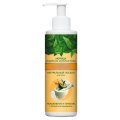 Moisturising & Nourishing Natural Body Lotion, 250 ml |
YAKA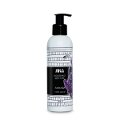 Lavender Body Lotion, 200 ml |
Triuga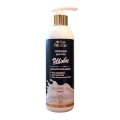 Silk Body Lotion, 300 ml |
YAKA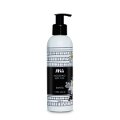 Vanilla Body Lotion, 200 ml |
